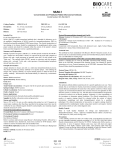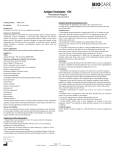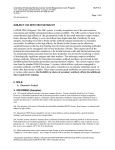Transcript
Treponema pallidum (Spirochete) Concentrated and Prediluted Polyclonal Antibody Control Number: 902-135-040215 Catalog Number: CP 135 A, B, C PP 135 AA IPR 135 G10 OAR 135 T60 Description: 0.1, 0.5, 1.0 ml, concentrated 6.0 ml, prediluted 10 ml, prediluted 60 tests, prediluted Dilution: 1:100-1:200 Ready-to-use Ready-to-use Ready-to-use Diluent: Da Vinci Green N/A N/A N/A Intended Use: For Research Use Only. Not for use in diagnostic procedures. Summary and Explanation: Spirochete (Treponema pallidum) is the causative agent of syphilis. In the past, localization of the spirochete agent was achieved with silver stains such as Steiner's and/or Warthin-Starry. Treponema pallidum can now be successfully localized with immunohistochemical techniques in formalin-fixed paraffin-embedded tissue. Studies have shown this offers a substantial advantage over silver-techniques in both sensitivity and specificity. The antibody consists of a rabbit purified IgG fraction and is highly specific for spirochete (1). Principle of Procedure: Antigen detection in tissues and cells is a multi-step immunohistochemical process. The initial step binds the primary antibody to its specific epitope. After labeling the antigen with a primary antibody, an enzyme labeled polymer is added to bind to the primary antibody. The detection of the bound antibody is evidenced by a colorimetric reaction. Source: Rabbit polyclonal Species Reactivity: Human, others not tested Clone: N/A Isotype: N/A Total Protein Concentration: ~10 mg/ml. Call for lot specific Ig concentration. Epitope/Antigen: Treponema pallidum (Spirochete) Cellular Localization: Corkscrew bacteria Positive Control: Spirochete infected tissues Known Applications: Immunohistochemistry (formalin-fixed paraffin-embedded tissues) Supplied As: Buffer with protein carrier and preservative Storage and Stability: Store at 2ºC to 8ºC. Do not use after expiration date printed on vial. If reagents are stored under conditions other than those specified in the package insert, they must be verified by the user. Diluted reagents should be used promptly; any remaining reagent should be stored at 2ºC to 8ºC. Staining Protocol Recommendations (intelliPATH and manual use): Peroxide Block: Block for 5 minutes with Biocare's Peroxidazed 1. Pretreatment Solution (recommended): Reveal Pretreatment Protocol: Heat Retrieval Method: Retrieve sections under pressure using Biocare's Decloaking Chamber, followed by a wash in distilled water; alternatively, steam tissue sections for 45-60 minutes. Allow solution to cool for 10 minutes then wash in distilled water. Protein Block (Optional): Incubate for 5-10 minutes at RT with Biocare's Background Punisher. Primary Antibody: Incubate for 30 minutes at RT. Probe: N/A Polymer: Incubate for 30 minutes at RT with a secondary-conjugated polymer. Chromogen: Incubate for 5 minutes at RT with Biocare's DAB - OR - Incubate for 5-7 minutes at RT with Biocare's Warp Red. Counterstain: Counterstain with hematoxylin. Rinse with deionized water. Apply Tacha's Bluing Solution for 1 minute. Rinse with deionized water. intelliPATH™ Automated Slide Stainer: IPR135 is intended for use on the intelliPATH™ Automated Slide Stainer. Refer to the intelliPATH Automated Slide Stainer manual for specific instructions on its use. When using the intelliPATH, peroxide block with intelliPATH Peroxidase Blocking Reagent (IPB5000) may be performed following heat retrieval. Protocol Recommendations (ONCORE Automated Slide Staining System): OAR135 is intended for use with the ONCORE Automated Slide Staining System. Refer to the ONCORE Automated Slide Staining System User Manual for specific instructions on its use. Protocol parameters in the ONCORE Automated Slide Stainer Protocol Editor should be programmed as follows: Protocol Name: T. pallidum Rb - OR - Tpallidum Rb AP Protocol Template (Description): Rb HRP Template 1 - OR - Rb AP Template 1 Dewaxing (DS Option): DS2 Antigen Retrieval (AR Option): AR2, low pH; 103°C Reagent Name, Time, Temp.: T. pallidum Rb, 30 min., 25°C Technical Note: This antibody has been optimized for use with Biocare's MACH 4 Universal HRPPolymer Detection and ONCORE HRP and AP Detections. Other Biocare polymer detection kits may be used; however, users must validate incubation times and protocols for their specific application. Use TBS for washing steps. Limitations: This product is provided for Research Use Only (RUO) and is not for use in diagnostic procedures. Suitability for specific applications may vary and it is the responsibility of the end user to determine the appropriate application for its use. Precautions: 1. This antibody contains less than 0.1% sodium azide. Concentrations less than 0.1% are not reportable hazardous materials according to U.S. 29 CFR 1910.1200, OSHA Hazard communication and EC Directive 91/155/EC. Sodium azide (NaN3) used as a preservative is toxic if ingested. Sodium azide may react with lead and copper plumbing to form highly explosive metal azides. Upon disposal, flush with large volumes of water to prevent azide build-up in plumbing. (Center for Disease Control, 1976, National Institute of Occupational Safety and Health, 1976) (2) 2. Specimens, before and after fixation, and all materials exposed to them should be handled as if capable of transmitting infection and disposed of with proper precautions. Never pipette reagents by mouth and avoid contacting the skin and mucous membranes with reagents and specimens. If reagents or specimens come in contact with sensitive areas, wash with copious amounts of water. (3) 3. Microbial contamination of reagents may result in an increase in nonspecific staining. 4. Incubation times or temperatures other than those specified may give erroneous results. The user must validate any such change. 5. Do not use reagent after the expiration date printed on the vial. 6. The SDS is available upon request and is located at http://biocare.net/. Technical Support: Contact Biocare's Technical Support at 1-800-542-2002 for questions regarding this product. References: 1. Hoang MP, High WA, Molberg KH. Secondary syphilis: a histologic and immunohistochemical evaluation. J Cutan Pathol. 2004 Oct;31(9):595-9. 2. Center for Disease Control Manual. Guide: Safety Management, NO. CDC-22, Atlanta, GA. April 30, 1976 "Decontamination of Laboratory Sink Drains to Remove Azide Salts." 3. Clinical and Laboratory Standards Institute (CLSI). Protection of Laboratory Workers from Occupationally Acquired Infections; Approved Guideline-Fourth Edition CLSI document M29-A4 Wayne, PA 2014. Page 1 of 1
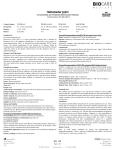
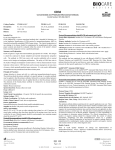
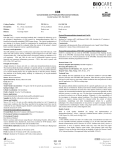
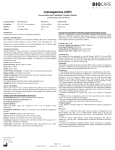
![Progesterone Receptor (PR) [16]](http://vs1.manualzilla.com/store/data/005703733_1-5d4a6a4c070c4aacc906912b3410a27a-150x150.png)
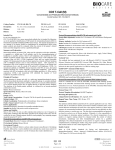
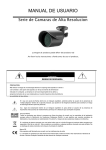

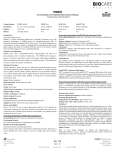
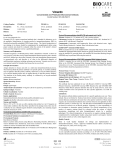
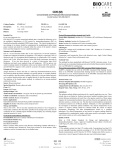
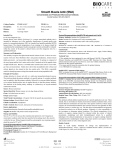
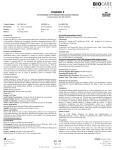
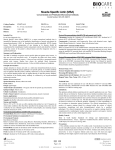
![Estrogen Receptor (ER) [SP1]](http://vs1.manualzilla.com/store/data/005885543_1-e9d75303a2a759dcb2dd4dad516aa5ce-150x150.png)
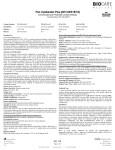
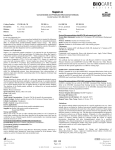
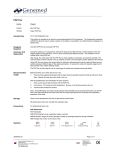
![TTF-1 [SPT24] - Zytomed Systems](http://vs1.manualzilla.com/store/data/005793963_1-173a06c06d5648223f763723a0e98383-150x150.png)
